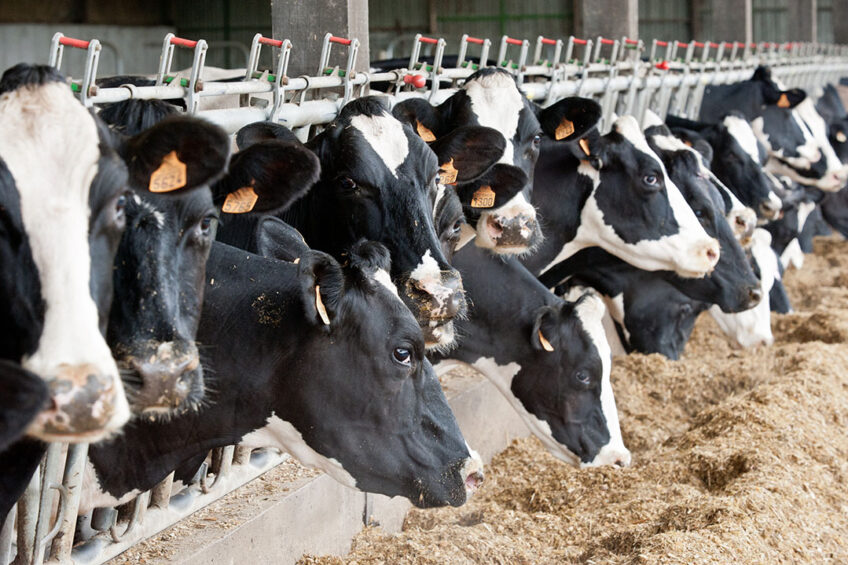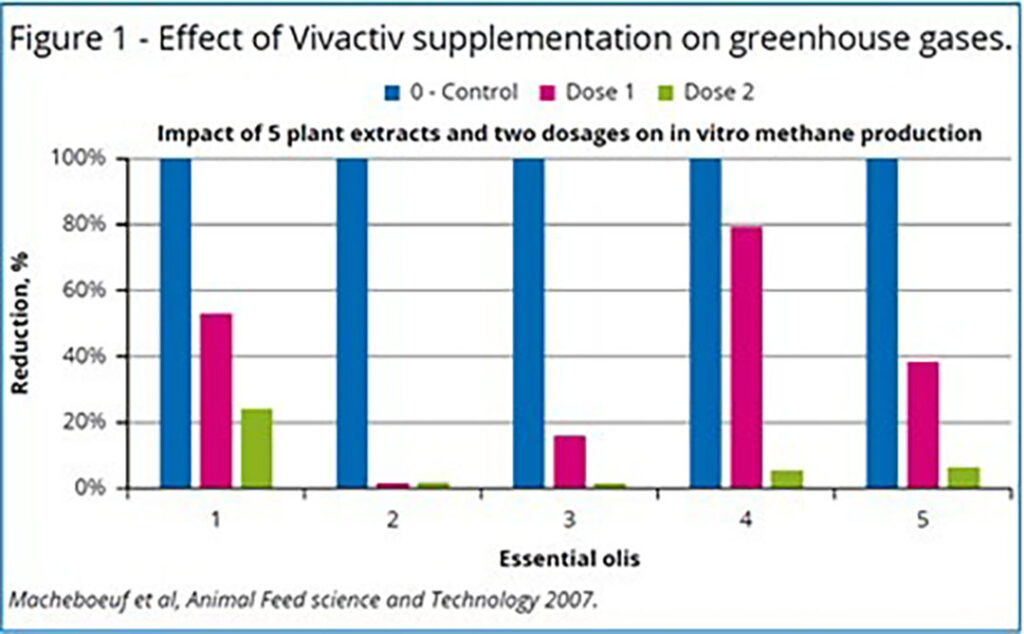Sustainable dairy farming while still profitable

When it comes to consumers and buying food, there is a sense of responsibility towards the planet. Sustainable dairy and farming practices are a big factor while consumers look for affordable food that saves money and limits food waste. The Covid-19 pandemic has accelerated these new purchasing behaviours.
The dairy industry must take these points into account to meet its market demand. This concerns all the links in the chain, especially the breeders and feed manufacturers who are the major players in the transformation of breeding methods and animal feed. Vivactiv’s natural plant-based nutritional solutions help milk producers in this transition.
Improves the digestive function
Vivactiv works all along the digestive tract, from stimulating salivation and increasing rumen fermentation to stimulating digestive enzymes at the intestinal level for better nutrient absorption.
By improving protein and energy yields, feed efficiency is increased. Depending on the diet and the level of production, energy yield is improved by 5% and protein yield by 10%. Precise energy and protein values are given for each raw material in different rationing systems to have an accurate value of the feed or complete diet.
By regulating ruminal fermentation, Vivactiv contributes to better stabilisation of ruminal pH and reduces the risk of bloating or acidosis, thus contributing to better health of the herd and allowing an increase in the level of cereals such as wheat or barley in the ration. This then reduces the need to purchase expensive energy sources like protected fat.
Original and natural
Vivactiv is a 100% natural solution based on plants and trace elements. As a result of our phytoexpertise research, more than 260 active ingredients have been tested, alone or in combination and at different doses, in order to find the best association between methane reduction (Figure 1) and performance improvement (Table 1). Several of these studies have been carried out in partnership with public research organisations and have been published (see Figure and Table).
Milk urea nitrogen significantly decreased while milk production increased. This is a sign of better protein efficiency. Nitrogen excreted in urine is linearly correlated to the level of milk urea nitrogen in milk. Vivactiv has therefore made it possible to significantly reduce urinary nitrogen excretion and thus environmental pollution (reducing NH3 emissions).
Sustainable dairy farming
By improving the value of feed, Vivactiv allows the use of more sources of raw materials, local or forages. Farmers are less dependent on the purchase of imported raw materials, which are often more expensive and less sustainable.
For example, for a herd of 500 cows, this reduces the purchase of a little more than 70 tonnes of soybean meal per year. It is possible to go even further by substituting all or part of the soybean meal with protein sources of lower quality (such as rapeseed and sunflower).
In addition, Vivactiv reduces greenhouse gas emissions such as methane by 6.5-10% (CCPA-INRA, 2011).
The plant extracts in Vivactiv have a direct action on methanogenic bacteria and protozoa population. Ammonia emissions are also reduced by up to 13% due to the better use of ingested nitrogen. This represents 15 tonnes less ammonia per year for a herd of 500 cows.
Another advantage is that Vivactiv slows down the rate of degradation of fast starch. This makes it possible to make better use of cereals such as wheat or barley and cassava, and to do so with greater security against acidosis or bloating. This contributes to better digestive security.
Profitable with lower emissions
The cost of investment is often an obstacle to addressing environmental concerns. With Vivactiv, farmers can significantly reduce carbon and nitrogen emissions while making money thanks to the savings in feed costs with the same performance.
As an illustration, the gain for a feed manufacturer is € 10-20/t depending on the context. This amounts to € 300,000-600,000 for a factory that produces 30,000 tonnes of ruminant feed. At farm level, the gain is € 0.20-0.35 per day. That is approximately € 45,000 per year for a farm of 500 dairy cows.
In order to ensure the best efficiency, the Vivactiv range includes 3 products suitable for different diets:
- Turboviv: balanced ration;
- Amiviv: ration rich in starch, for fattening animals, ration with a low forage concentrate ratio; and
- Rumiviv: to protect soybean meal or all kinds of protein sources, specially soluble ones (e.g. rapeseed, alfalfa).
Vivactiv products can be included into compound or mineral feed or directly in the total mixed ration at farm level. The products of the Vivactiv range also exist in versions suitable for organic farming. Natural, easy-to-use, affordable and environmentally-friendly Vivactiv products are in line with new consumer behaviours.
References available on request.
Join 13,000+ subscribers
Subscribe to our newsletter to stay updated about all the need-to-know content in the dairy sector, two times a week.











